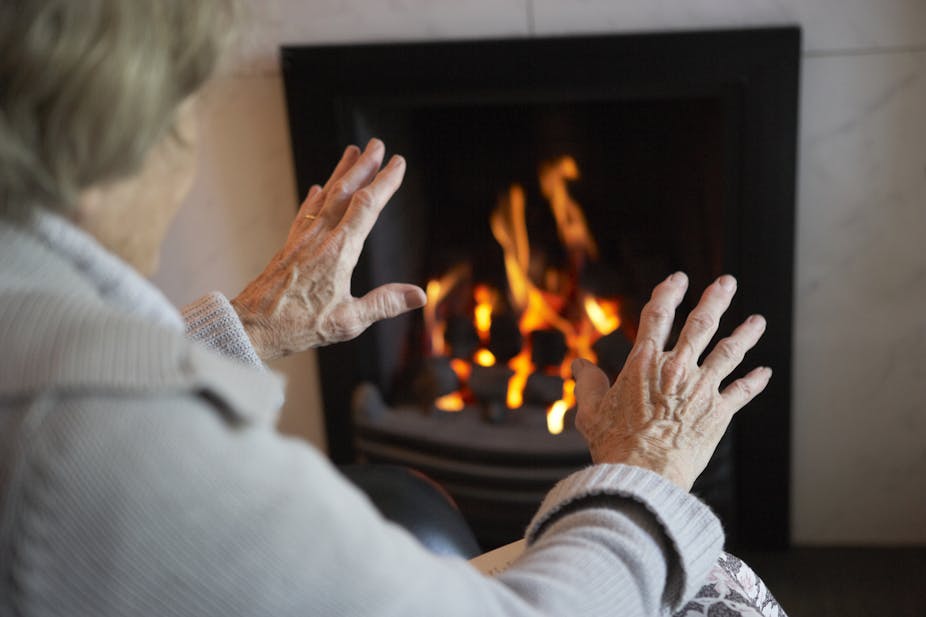In 2002 Scotland announced a plan to eliminate fuel poverty, one of few countries in the world to do so. The government was supposed to have got there by the end of this month, but it hasn’t – not by a long way. The story behind what has happened helps to show why a new approach to this measure of living standards is needed, not only in Scotland but worldwide.
Scotland defines fuel poverty as households that must spend 10% or more of their total income to have regular and adequate heating. When this year’s figures are finalised, they will confirm that well over 30% of households are still in this category. Levels also vary widely across regions and households – 70% of households in the Western Isles, for example.
To be fair to Scotland, many countries still don’t even recognise this living standard, or define it more narrowly. England used to recognise it, but switched to a blunter definition two years ago. This was essentially a Westminster ploy to slash the figures and attracted widespread criticism.
The new English definition no longer makes adjustments to people’s status based on criteria such as housing conditions and maintaining minimal indoor temperatures. Because Scotland makes these adjustments it counts more people as fuel poor, so this makes comparisons harder. England recognises that 11% of households are in fuel poverty, roughly half what the figure was before it was redefined.
It’s equally hard to compare elsewhere. Australia and New Zealand focus on heating rather than fuel poverty. The EU has informally linked the 10% to energy needs, more in line with Scotland, but until this is formally adopted by the EU, no one has to recognise it – or publish figures.
The EU data show wide variations in fuel poverty across Europe – and these comparisons are not very flattering to Scotland. For example Denmark and Sweden are at 4% and 5% for energy poverty and Romania and Bulgaria are estimated at 24% and 31% respectively. Though before anyone writes a headline about Romania having less fuel poverty than Scotland, you have to set the east European figures against higher fuel costs in the West.
The Scottish position
Clearly, however, the Scottish numbers are disappointing. You can see from the graphic below that the situation has grown steadily worse since the 2002 announcement. Scotland is back in the same position as in 1996, the one previous year for which there are figures.
The improvement at the turn of the century was due to things like increasing incomes and employment and energy efficiency programmes. Fuel poverty got worse again because of the recession and rising energy prices, and because of the poor condition of Scottish housing stock: 53% with disrepair to critical elements. Early schemes also targeted low-hanging fruit such as insulating buildings already in reasonable repair – and still largely do.
Scottish fuel poverty

Scotland’s approach to fuel poverty has been to give qualifying households grants to install insulation, new boilers and so forth. In determining who gets the grants, Scotland has been wise not to follow England’s definition-switch. All the same, it still determines eligibility by a blunt threshold formula.
This is underpinned by an assumption that people’s energy use rises evenly as they earn more, but it doesn’t. Beyond about £50,000 household income, people start using exponentially greater amounts of resources, while the lowest-earning 20% to 30% use proportionally less than you would expect. This is because at the level that fuel poverty bites, many cut their energy use or are so indebted they are forced to.
This flaw means the grants are not made available to enough people at the bottom. It also overlooks the fact that falling into fuel poverty makes you more vulnerable to the things that cause it, such as poor mental health or inability to find work. The longer you stay in fuel poverty the more severely these affect you and persist even after you’ve received support. The good news is that the Scottish government is now looking at its definition to try to better target the most vulnerable – getting it right will be the challenge.
Poverty and carbon cuts
Another problem is that the Scottish government assesses need for these grants in parallel to its schemes for encouraging wealthier households to cut their carbon use at home. Both use the same national helpline and have a national subsidy scheme delivered by local authorities and partner organisations. They’ll formally be part of the same scheme in the coming months. Total spend at present on these interventions is just £79m.
This double focus means Scotland doesn’t spend enough on the face-to-face meetings and house visits that people in fuel poverty need, but relies on its helpline as a first port of call. People in fuel poverty need closer support than people buying an energy-efficient boiler. If the government saw this as a health and welfare problem instead of an energy issue, this would become more obvious.

Treating this under health and welfare would mean involving GP surgeries, the NHS, local authorities and housing associations. It would mean incorporating an assessment of vulnerability and an element of flexibility into when grants can be given. It would mean extending the protection to people at risk of fuel poverty and making households resilient to it once they’re lifted out. It demands that people are treated not as statistics but as human beings.
Finally, it hasn’t helped that some energy efficiency delivery organisations are allowed to evaluate their own services and those of other organisations. This is why a 2014 report by Citizens Advice Scotland, for which I was co-author, recommended that schemes had an independent formal evaluation element built in. At least this is one part of the problem that should be simple to solve.

